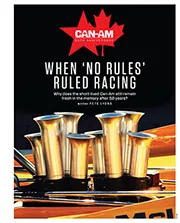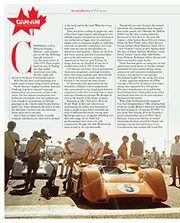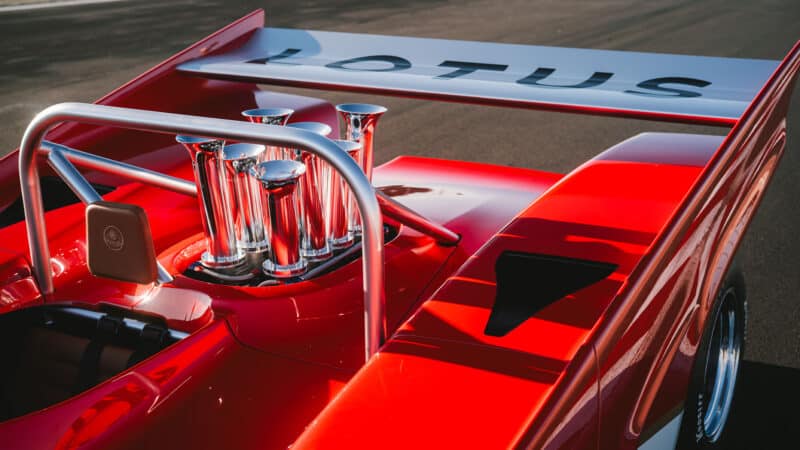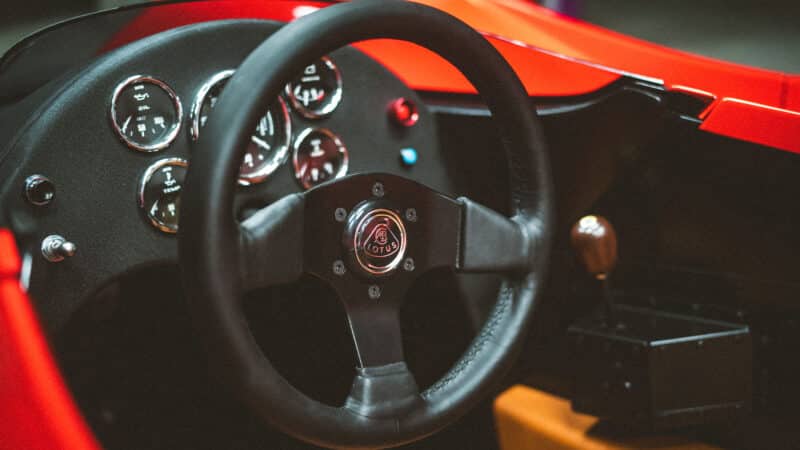We can only wonder what the car could have achieved on track because those draughtsman drawings – originally schemed by Lotus man Geoff Ferris – ultimately never made it to the race track. A lack of resources meant that the project was scrapped and the blueprints put away in a cupboard. They were forgotten about until 2016, when Colin’s son Clive revealed their existence to Motor Sport.
Now, over 50 years following its original conception, the Type 66 will finally take to the circuit.
With a carbon fibre body and redesigned floor, the car will now produce 800kg of downforce at 150mph, with a mid-mounted “period-representative” V8, tuned by Lotus. It’s fed by evocative air intake trumpets, which have a role in smoothing airflow to the engine.

Car will produce 800kg of downforce at 150mph
Lotus
“The car would have shared many innovative features with our most successful F1 chassis, the Lotus Type 72, which was developed during the same era,” commented Chapman’s son Clive, who now runs Classic Team Lotus, looking after its competition heritage fleet.
“These include side-mounted radiators which helped reduce front drag, increase front downforce and channel airflow through and over the car. The rear of the car incorporates a distinctive tail section, resembling the Le Mans endurance cars of the period.












